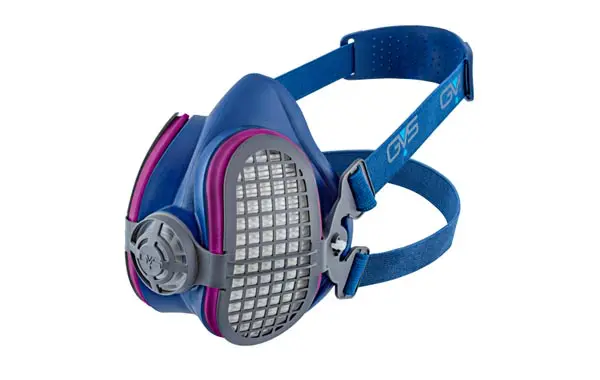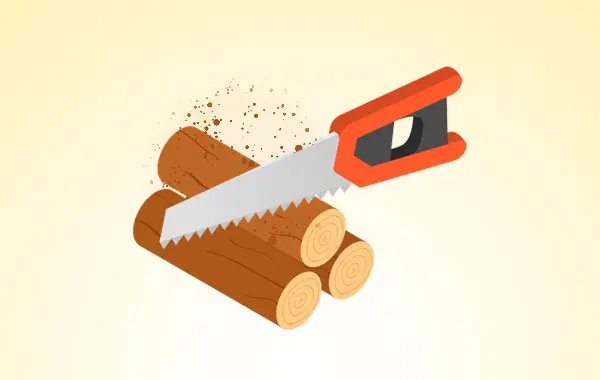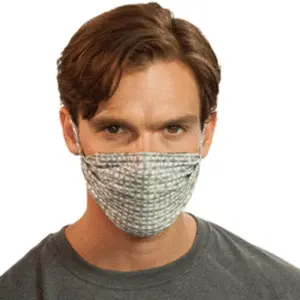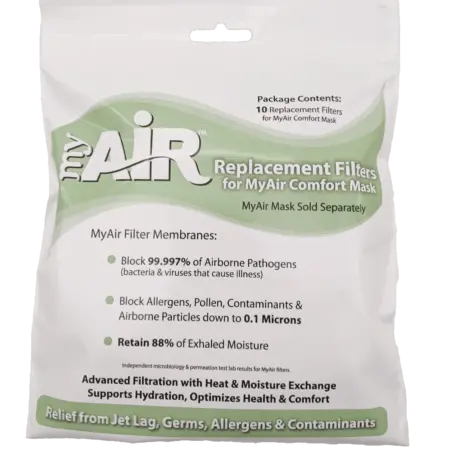Woodworking can kick up a lot of dust and wood particles. Many shops have a vacuum attached to the larger machines, but that just reduces airborne particulates from “unbreathable” to “irritating”. Unless the only woodworking you’re doing is with hand tools like chisels and planes, you’re probably kicking up enough sawdust that you really should have some kind of breathing protection.
Do You Need a Mask?
The first simple question to ask is whether or not you even need a mask in the first place. While it seems like common sense to protect your lungs from dust, many people choose to forego masks because they can be pretty uncomfortable.
To determine whether or not you need a mask, you need to answer a few questions.
What kind of woodworking are you doing? If you’re cutting out some joinery with chisels, maybe painting a piece of furniture, doing a bit of hand-sawing, or otherwise doing very minor woodworking work, you probably don’t need a mask. You can wear one to protect yourself if you want, but the amount of dust you kick up with such small activities is minimal.

Conversely, if you’re going to be running a band saw, table saw, power sander, or other heavy piece of machinery, chances are you’re going to be kicking up quite a bit more dust. The more dust you’re putting into the air, the more likely you are to need a mask of some kind to protect yourself from that particulate.
Are you in a well-ventilated area? Working in a basement is different from working in a shop, which is different from working in a garage, which is different from setting up some equipment outside to do your major cuts and sanding jobs.
An enclosed area with low ventilation is going to be a dust hazard no matter how you slice it. Even with some good ventilation, you still kick up enough dust in an enclosed space that you need to protect yourself. On the other hand, an open area such as the outdoors minimizes the need for breathing protection. An open garage might be suitable, but you need air circulation to get that dust to escape to stay safe.
Are you subject to the Occupational Safety and Health Administration? If you’re doing woodworking on the job, chances are you need to abide by the OSHA guidelines. If you’re just doing some woodworking in a home shop, the OSHA guidelines can be a good baseline for protection, but you’re not going to be fined if you don’t comply.

OSHA specifies that air in a wood shop should have no more than 1mg of particulate per cubic meter over the course of a 10-hour shop session. That’s not a lot of dust, and even just running a belt sander for a few minutes can generate that much. More often than not, you end up needing a mask of some kind.
Oh, and don’t just think “it’s just wood, how much damage can it do?” Sawdust isn’t ever just sawdust. Wood dust on its own can actually be pretty bad for you, but depending on the kind of wood you’re working with, it can have all manner of unknown chemicals in it. Do you know what was in the soil where the tree was growing, and thus what was leached into the wood? Do you know what chemicals were used to treat the lumber to prevent rot or warping? The fact is, wood dust is a known carcinogen, so in addition to possible respiratory issues, you can end up developing cancer if you work with wood too long without protection.
Types of Masks
There are a handful of different kinds of masks you can use for woodworking. On the plus side, since wood isn’t a horrible caustic chemical, you don’t generally need a respirator or fully enclosed mask. Wood particulate can be pretty small, though.
The weakest and worst kind of mask you can use is something like a disposable dust mask. We’ve all seen them; the white covers with the elastic band and the little metal piece across the nose. These masks are sold in every hardware store and grocery store with a home improvement department. They’re meant to be used for an hour or so, to protect you from the worst of “nuisance” dust, and then thrown away.

These aren’t full face-sealing masks, so particulate can still get through around the edges. They’re not very comfortable, because they’re not designed to be worn for long periods of time. They’re better than nothing, but they’re not much better. They also cannot be used to protect you from more dangerous substances, like chemical vapors, silica, or asbestos.
The only benefit they have is that they’re extremely cheap and extremely convenient. You can just snag a box of 50 off a shelf at the hardware store when you’re picking up other supplies, and they’ll last you for weeks or longer. They never need to be cleaned, since they’re disposable.
A step up from these kinds of masks are the N95 particulate respirators. These are still disposable masks, like these 3M masks. They’re a little better designed and a little more comfortable than the disposable masks up above. They’re softer, and they conform to the contours of the face more fully, which means they have more of a seal and can protect from more particulate in the air.

The N95 designation is one of several ratings a mask can be given by the National Institution for Occupational Safety and Health, a partner organization to OSHA. You can read more about NIOSH, OSHA, and the mask designations here.
Disposable masks have one primary problem, however, which is that they’re disposable. You can’t clean them, and you don’t want to. They might be cheap individually, but you have to keep buying them over time, and that just means you’re spending more on cheap masks than you would on a good reusable mask.
In the world of reusable masks, you have a lot of different options. Generally, you have to balance two considerations: quality of filtration versus comfort. The most comfortable masks are generally not hugely protective, since they’re not face-sealing. The most protective masks have a full seal around the face, and are usually made of more resilient materials, but they’re heavier and stiffer to wear.
Masks like the MyAir mask are a form of reusable mask that puts comfort first. The replaceable filters are quite good at blocking most airborne particulates, but because they aren’t full face sealing, they aren’t certified by NIOSH. Again, you can read more of that up above.

This kind of mask will protect you adequately from the airborne particulate that comes from woodworking sessions, though it might not be adequate if you’re doing 10 hours of woodworking a day for months on end. In other words, if woodworking is your career, you’re going to want something with a little more protection.
Other benefits of this style of mask are that they’re reusable and washable and highly breathable. (Our mask has replaceable filters too, so some of these statements aren’t accurate.
There are masks in a similar range, like the Base Camp or Fighttech mask style, which are more snugly fit to the face. They also have replaceable filters for an added cost, but the masks are effective enough at what they do that it’s worth it. The filters are an added cost, but the masks are effective enough at what they do that it’s worth it.
One step up from these masks is going to be a little less comfortable, but a little better filtration. Something like, for example, the Elipse P100. This mask is somewhere between a full respirator and a dust mask. It is reusable, and it has some elements of comfort engineered into its design. The straps are more comfortable than the usual thin elastic bands, for example, and the actual surface of the mask is a soft rubber that doesn’t irritate the skin as much as some other materials.

These masks also have replaceable filters. You can use one set of filter cartridges for some time before they need replacement. When they do need replacement, it’s a simple matter to swap out old filters for new ones. They’re more expensive than your usual disposable masks, but they also last quite a bit longer individually.
Another step up on the scale of masks is more than likely going to be a respirator device. A full respirator is going to be overkill for pretty much any woodworking task, unless you’re operating in a very enclosed space with very fine particulate and no ventilation. You have more problems than just a mask if you’re in that situation, though.
Respirators filter more out of the air than just particulate. They can also help protect you against chemical fumes and assorted other dangers, so they’re best for uses where you’re doing more than just woodworking.
Another option is the powered respirator. These kinds of respirators usually use a half mask or full mask design, and have a battery pack and airflow system that circulates air through a much more robust filtration system. Here’s an example; this power respirator provides much more protection, but is generally going to be overkill for simple woodworking tasks.
Above even that, there are closed systems with self-contained air supplies, but those are never necessary for working in a wood shop.
What Kind of Mask Should You Choose?
Your choice of mask depends largely on what you’re doing with wood and for how long you intend to be doing it.
Something like simple demolition or construction, where you’re running a table saw for a few minutes at a time and generating primarily coarse sawdust, is not going to generate a ton of fine particulate that can cause issues. You can use disposable masks or anything up to the MyAir style of mask and be perfectly fine. We’re biased and recommend the MyAir, of course, but any mask in that range is ideal because it has a good balance of comfort and protection.

If you’re working in a shop long-term, if you’re spending an extended amount of time working with sanders – and this includes floor sanders, which can kick up a lot of dust even with a vacuum system attached – or if you’re working with something that may have unknown particular, mold, or fumes, you may want something with better filtration. The Elipse mask linked above is a good choice, but there are dozens of other products in that same class that are equally viable options.
The chances that you’re going to need anything beyond that level of mask for woodworking is almost nonexistent. In fact, if you’re in a situation where you would need something like a closed-system powered respirator, you’re going to know it and wouldn’t be reading this article to begin with.
Finally, of course, you have to balance this all with your personal preference. There will always be trade-offs when considering filtration, breathability, comfort, and risk.
What about you in the audience? Do you have a favorite style of mask you use for woodworking or other shop tasks? If so, let us know what you’ve tried and how it has worked for you.





















0 Comments